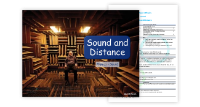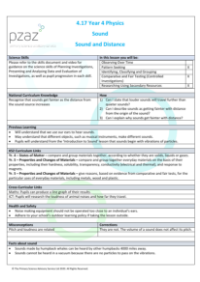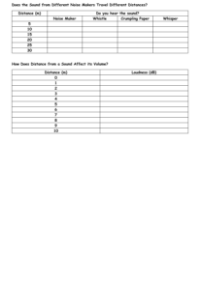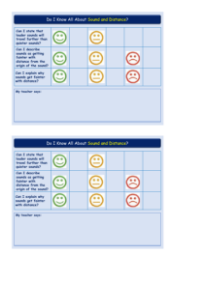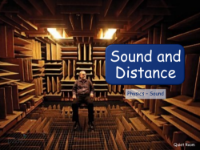Sound and Distance - Teacher Explanation

Science Resource Description
In Lesson 4.17 titled "Sound and Distance," part of the Year 4 Unit on Sound, students are expected to grasp the concept that sound intensity decreases as the distance from the source increases, in line with the National Curriculum requirements. The lesson incorporates a practical element where students create their own noise-making devices, with a cautionary note to keep the volume at a safe level to protect hearing. Additionally, the lesson involves outdoor activities, so adherence to the school's outdoor learning policy is advised. There's also an opportunity for cross-curricular learning, with potential for graphing results in maths and using ICT for research.
During the lesson, pupils will engage in an investigation to understand how sound travels over distance. They will use noise-making devices, such as bottles filled with rice or marbles, and measure the sound levels with either a sound meter app on learning pads or dedicated sound meter devices. The practical activity involves measuring the loudness of the sound at increasing distances until it is no longer detectable. This experiment demonstrates the dissipation of sound energy as it spreads out in all directions, leading to a decrease in volume with distance. Furthermore, students will research how animals use sound, investigating the distances over which various animal sounds can be heard and why some sounds travel further than others. This research will touch upon concepts such as frequency and how it affects the propagation of sound through different mediums, like water for humpback whale calls.

